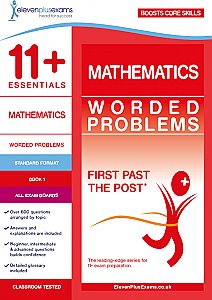11 Plus Independent School Maths
Independent schools tend to test from a wider syllabus than selective state schools. The exams may also be a little longer, at one hour, rather than the 50 minutes commonly found in the 11 plus tests.
The core topics are broadly similar, and are based on the syllabus for Key Stage 2 (KS2) Maths. However the independent sector exams tend to have harder and more taxing questions towards the end of the examination. These questions may be used by the school as indicators of which children are potential scholarship candidates.
Furthermore as a general rule the questions are often “worded problems”, requiring the child to use the written information to come to an answer, whereas in the state sector they will often be straightforward mathematical questions, such as working out the answer to a sum.
A typical independent sector maths exam might expect your child to have mastered:
- The 4 basic operations on integers: addition, subtraction, multiplication and division
- BODMAS (or BIDMAS) especially the use of Brackets
- Shape Recognition: square, rectangle, parallelogram, rhombus and trapezium
- Rounding numbers e.g. to 2 decimal places or 10 or 100 etc
- Factors and multiples
- Sequences e.g. with common differences
- Fractions and common denominators
- Decimals as used in money, lengths, time
- Rounded Decimals e.g. nearest 10th
- Ratios: Solve simple problems involving ratio and direct proportion.
- Worded Problems e.g. equally likely, fair, unfair, certain
- Summary Statistics e.g. mean, median, mode or range
- Percentages & percentages of whole numbers
- Linear Symmetry
- Rotational Symmetry
- Rotations, Reflections & Translations
- Prime Numbers up to 100
- Square numbers up to 225
- Decimal – Fraction conversions & equivalents
- Common Units e.g. time, mass, time, perimeter, area, money
- Unit Conversions e.g. kg to mg, m to cm
- Speed, distance & time problems
- Scale reading
- Visuals Interpretation e.g. tables, pie charts
- Areas of common shapes e.g. squares, rectangles, right angled triangles and circle
- Perimeters of common shapes e.g. squares, rectangles, right angled triangles and circle
- Basic Algebra
- Coordinates of Quadrants
- Geometry, Right Angles, Perpendicular, parallel Lines, acute angles
- Angles in triangle, straight line, circles









